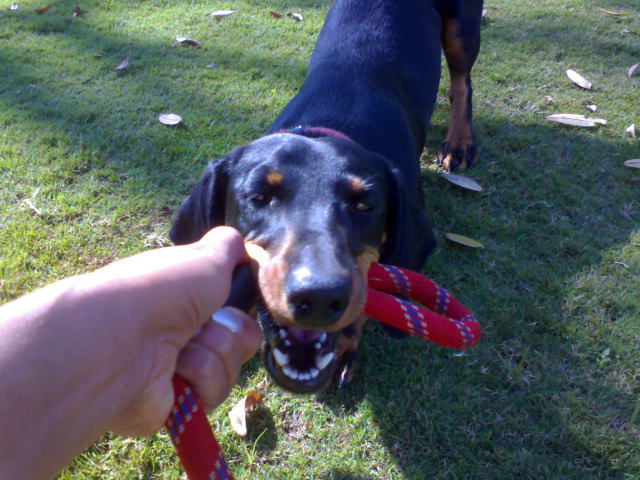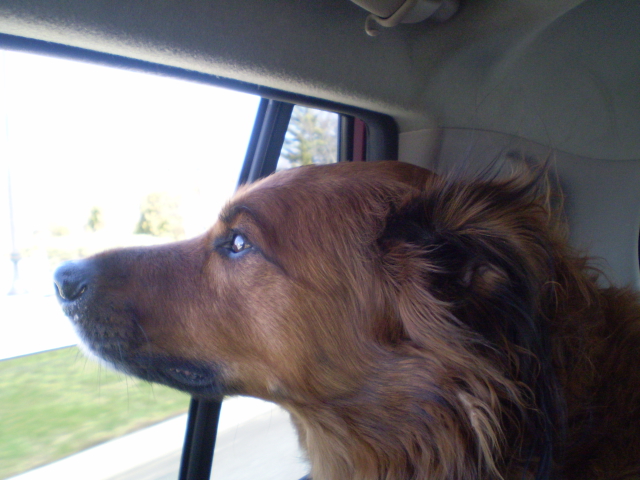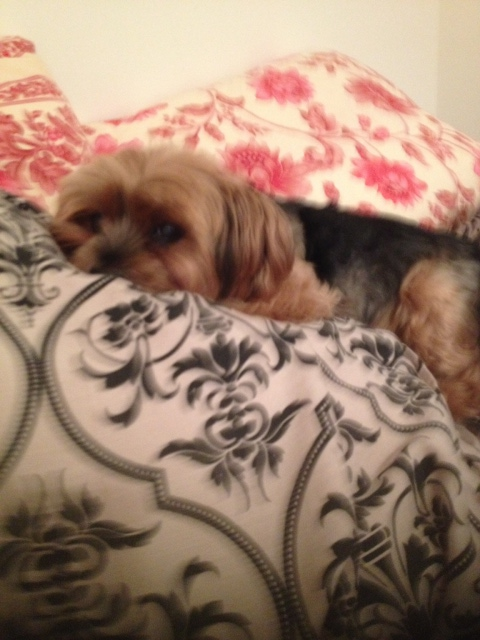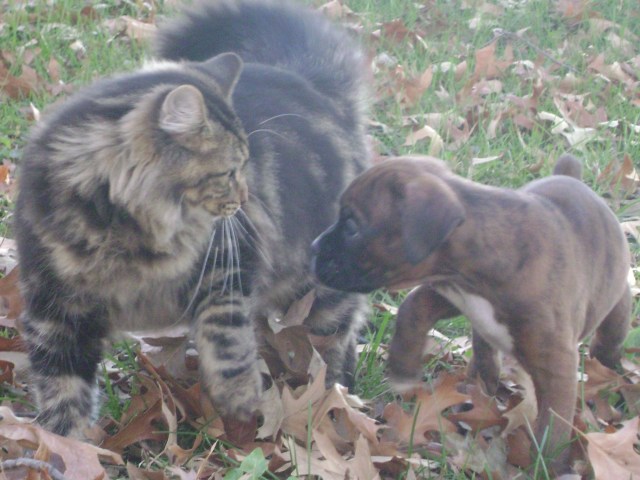QuestionQUESTION: I have a 4 month old rott that pees when you touch him. He only does it when you are trying to get him to do something that you want him to do. For example: if he jumps up on the couch and I want him down, I'll try to course him down and that doesn't work, so if I tell him to get down and you walk over to him to get him down he will pee. It is happening more often and almost everytime that you go to touch him, even when it is just to pet him. If we try to get him to do something that he doesn't want to do he will pee. How do we get him to learn what we want him to do when he is peeing all the time?
PLEASE HELP!!
ANSWER: Many dogs eventually outgrow it, but you can reduce it by building the dog's confidence up. Start with obedience training. The key to most behavior problems is approaching things using the dog's natural instincts. Dogs see all the people and dogs in the household as a pack with each having their own rank in the pack and a top dog. Life is much easier if the 2 legged pack members outrank the 4 legged ones. You can learn to play the role of top dog by reading some books or going to a good obedience class. A good obedience class or book is about you being top dog, not about rewarding standard commands with a treat. Start at http://www.dogsbestfriend.com/ As you praise the dog for following your commands, it will build its confidence. You really need to be using the positive methods most dog trainers are using now.
Play tug of war with the dog and lose. However at the end of the game, take the rope or toy and put it up, less the dog becomes confused about who is top dog.
Ropes from the pets' store quickly turn to hazardous shreds. Ones I made
lasted much better. Go to a hardware or home center that sells rope by the
foot. Buy 2' of 3/4" poly rope. Melt the ends, and tie knots in it. Get
them as tight as possible, put it in a vise and pound it with a hammer. Watch
carefully, and be ready to discard when it comes apart.
Finally, make sure it has a den to live in. If you are not using a crate, buy one. The dog may be happier in its den than loose in the house. It relaxes, it feels safe in its den. It rests, the body slows down reducing the need for water and relieving its self. Dogs that have been crated all along do very well. Many of them will rest in their crates even when the door is open. I think the plastic ones give the dog more of a safe, enclosed den feeling. Metal ones can be put in a corner or covered with something the dog can't pull in and chew. Select a crate just big enough for the full grown dog to stretch out in.
---------- FOLLOW-UP ----------
QUESTION: Thank you for the information, I will try it. However, I now have a few more questions.
We have been using the crate since day one and he hates it. He won't go into it willingly and he also pees when trying to put him in it. I have never hit him or disciplined him in a way that is mean. I own other dogs and have had other rottweilers in the past. This one is the only dog that I have had that does this. Also, when you are trying to be nice and pet him or give him a treat he will roll onto his back and pee. I love this dog but it becoming a real problem, that you can't show him ANY attention at all without him peeing. Any more suggestions???
AnswerWe recently kept a 9 month old male Lab. The easiest way to get him into the crate was to put some of the aerosol cheese the lady sent along in a kong.
If his testicles are starting to descend, talk to the vet about neutering him now.
I am having a hard time seeing a male Rott rolling over and peeing, but all breeds have a wide range of behaviors.
OK, one more idea. He may be a little big for some of this, but try it, perhaps wear old clothes and work on a hard floor or outside.
''Elevation for small puppies: Sit on the floor and gently put your hands around your pup's middle, below his front legs, and lift him up. He is facing you. Hold him for 15 seconds. Repeat until he no longer struggles. If he is past 10-12 weeks, lift his front feet off the ground, but don't pick him up.
Cradling for small puppies: Hold your puppy gently on his back, as you would cradle a small baby. If he struggles, hold him firmly until he quiets for 10-15 seconds. With larger pups, you can do this as your sit on the floor, with your pup between your legs.
Quiet lying down: Place your pup on the floor on his side, with all 4 legs pointing away from you. Use your hands on his neck/shoulder area and middle, to hold him in this position. When he is quiet, praise him. Lengthen the time that you keep him quietly in this position. When he accepts this position well, handle his paws and muzzle, while keeping him quiet.''
The quotes mean this isn't my original work. It is copied from my Puppy Raising Manual. I have long used these or minor variations of them, and they are very effective. You may want to give him a belly rub while he is on his back too. Helps bonding. There is a big difference between him rolling over and demanding a belly rub, and you choosing a time to roll him over and rub his belly. The latter cements your place as pack leader.

 Dog unwilling to eat
Question
Maggie
I have a 4 year old daschund female.She
Dog unwilling to eat
Question
Maggie
I have a 4 year old daschund female.She
 aggressive kids and dogs
QuestionI have a hyper aggressive 6 yr old who always p
aggressive kids and dogs
QuestionI have a hyper aggressive 6 yr old who always p
 Cant afford medical care for my yorkie
Question
Mr. Bojangles BoBo
Hi, I adopted
Cant afford medical care for my yorkie
Question
Mr. Bojangles BoBo
Hi, I adopted
 Puppy wont come
Question
Capone & Rascal
Help! My seven week
Puppy wont come
Question
Capone & Rascal
Help! My seven week
 Temperature before birth
QuestionQUESTION: My female cheweenie is on day 52 of h
Temperature before birth
QuestionQUESTION: My female cheweenie is on day 52 of h